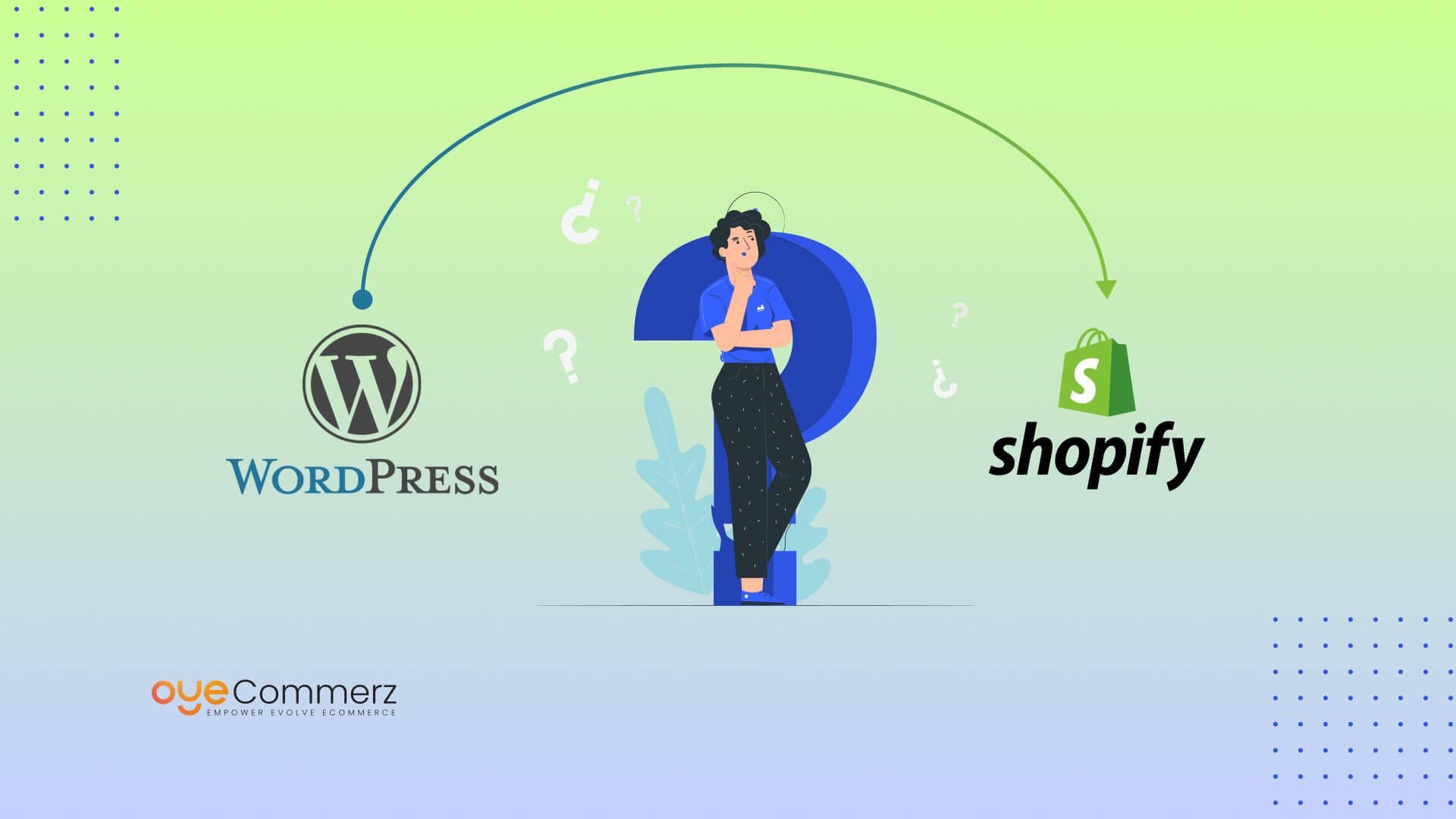Transitioning from WordPress to Shopify marks an promising step in streamlining your e-commerce processes. As businesses expand, selecting a platform that supports scalability, UX, and customization is essential. Shopify is widely recognized as a favorite for e-commerce professionals, offering superior flexibility, data protection, and user-friendliness. In this guide, we will delve into the transformative impact of this migration, highlight the benefits, and provide actionable steps to ensure a seamless transition.
1. Why Migrate from WP to Shopify?
The combination of WordPress and WooCommerce, has served countless online stores. However, as companies scale, challenges like plugin dependency, security vulnerabilities, and complex setups can hinder growth. Shopify, specifically created for digital retail, addresses these issues with an all-in-one, user-friendly platform. Statistics back this transition—Shopify powers over 4.4 million stores globally, with a documented 10% boost to sales conversion rates for many businesses after migration.
2. Key Benefits of Shopify for E-commerce Success
Shopify’s powerful platform is tailored for scaling brands. Its notable benefits are:
- Effortless Design Flexibility: Shopify offers over 80 professionally designed themes.
- Built-in Features: Features like Shopify Payments and integrated SEO streamline operations.
- Global Reach: Multi-currency support and regional customization enable businesses to expand internationally.
Additionally, Shopify delivers an availability percentage of 99.98%, guaranteeing your website is always operational.
3. Preparing for WordPress to Shopify Migration
Prior to starting the migration process, assess your current store. Review inventory details, customer details, and SEO performance. Resources such as Shopify’s Migration Kit or external tools can simplify this process. Develop a detailed strategy, ensuring all assets—product descriptions, images, and blog content—are ready for seamless import.
4. Data Migration: A Critical Step
Transferring your data is a cornerstone of a smooth transition. When migrating from WP to Shopify, focus on:
- Product Information: SKU, descriptions, and categories.
- Customer Data: Emails, order history, and custom fields.
- SEO Optimization: Preserve meta tags, URLs, and redirects to maintain search rankings.
Use tools such as LitExtension to facilitate seamless migration while reducing mistakes.
5. Tailoring Your Shopify Store to Fit Your Brand
Post-migration, customizing your Shopify store ensures it aligns with your brand. Utilize Shopify’s drag-and-drop editor to create layouts with ease. Shopify's templates are optimized for all devices, ensuring a smooth UX across devices—a critical factor, since 74% of online shopping comes from mobile users. Shopify migration tools
6. How to Protect Your SEO Rankings When Switching Platforms
Search engine optimization is crucial for preserving your visibility during migration. Shopify is highly optimized for search engines with clean URL structures, preloaded features, and smooth content management. Make sure you:
- Implement 301 redirects for old URLs.
- Enhance updated content with targeted phrases.
- Use Shopify's apps Plug in SEO to track analytics post-migration.
7. Essential Tests After Migrating to Shopify
Once the migration is complete, conduct thorough testing.
Check: - Page load times (Shopify delivers faster speeds compared to WordPress).
- Payment integration reliability and checkout processes.
- Adaptability across devices.
Testing guarantees your store provides a seamless shopping experience from the start.
8. Real-Life Success Story
One such migration success story is Gymshark, a sportswear company that transitioned to Shopify. Post-migration, the company saw a 60% increase in mobile sales and significantly lowered site downtime. This showcases the capabilities of Shopify in enhancing e-commerce Data migration to Shopify growth.
9. Challenges and Solutions
Migration is not without obstacles, such as data integrity and reconfiguring custom functionalities. However, Shopify’s extensive assistance and third-party experts make overcoming these hurdles manageable. Partnering with qualified Shopify developers helps guarantee a trouble-free transition.
10. Making the Switch: The First Step Toward Success
Migrating from WP to Shopify represents a forward-thinking approach to e-commerce. By focusing on growth, simplifying management, and improving buyer satisfaction, Shopify empowers businesses to thrive in competitive markets.
Final Thoughts
Transitioning from WP to Shopify is a strategic move that can greatly enhance your e-commerce success. With a robust migration plan, the right tools, and professional guidance, you can achieve new growth opportunities.
Ready to make the leap? Let’s discuss how our Shopify migration services can transform your online store. Get in touch today, or ask yourself: Is it time to seize Shopify’s advantages for your store?
